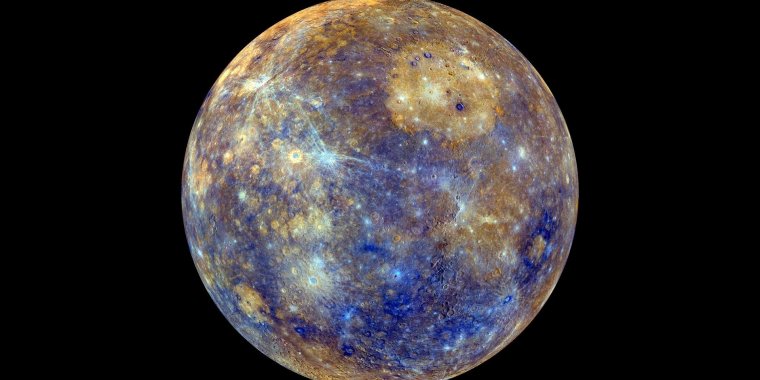| News / Space News |
A Closer Look at Mercury’s Spin and Gravity Reveals the Planet’s Inner Solid Core
Like Earth, Mercury’s outer core is composed of liquid metal, but there have only been hints that Mercury’s innermost core is solid. Now, scientists from NASA’s Goddard Space Flight Center in Greenbelt, Maryland have found evidence that Mercury’s inner core is indeed solid and that it is very nearly the same size as Earth’s inner core.

This colorful view of Mercury was produced by using images from the color base map imaging campaign during MESSENGER's primary mission. Photo: NASA/Johns Hopkins University Applied Physics Laboratory/Carnegie Institution of Washington
Some scientists compare Mercury to a cannonball because its metal core fills nearly 85 percent of the volume of the planet. This large core — huge compared to the other rocky planets in our solar system — has long been one of the most intriguing mysteries about Mercury.
Mercury’s interior is still active, due to the molten core that powers the planet’s weak magnetic field, relative to Earth’s. Mercury’s interior has cooled more rapidly than our planet’s. Mercury may help us predict how Earth’s magnetic field will change as the core cools.
The MESSENGER spacecraft entered orbit around Mercury in March 2011, and spent four years observing this nearest planet to our Sun until it was deliberately brought down to the planet’s surface in April 2015.
Radio observations from MESSENGER were used to determine the gravitational anomalies (areas of local increases or decreases in mass) and the location of its rotational pole, which allowed scientists to understand the orientation of the planet.
Each planet spins on an axis, also known as the pole. Mercury spins much more slowly than Earth, with its day lasting about 58 Earth days. Scientists often use tiny variations in the way an object spins to reveal clues about its internal structure.
In 2007, radar observations made from Earth revealed small shifts in the spin of Mercury, called librations, that proved some of Mercury’s core must be liquid-molten metal. But observations of the spin rate alone were not sufficient to give a clear measurement of what the inner core was like.
The team put data from MESSENGER into a sophisticated computer program that allowed them to adjust parameters and figure out what the interior composition of Mercury must be like to match the way it spins and the way the spacecraft accelerated around it.
The results showed that for the best match, Mercury must have a large, solid inner core. They estimated that the solid, iron core is about 1,260 miles (about 2,000 kilometers) wide and makes up about half of Mercury’s entire core (about 2,440 miles, or nearly 4,000 kilometers, wide).
In contrast, Earth’s solid core is about 1,500 miles (2,400 kilometers) across, taking up a little more than a third of this planet’s entire core. (NASA)
YOU MAY ALSO LIKE




